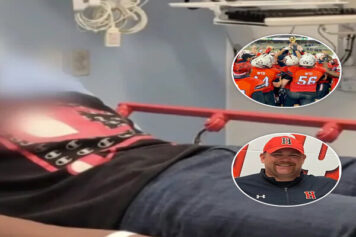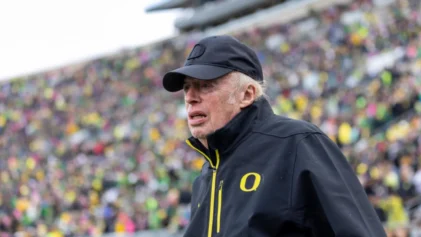I Shouldn’t Feel Guilty, But I Do
I wish I had written this story earlier.
Back when the South Poverty Law Center published their findings in March 18, 2020, of an uptick in hate crimes against Americans of East and Southeast Asian descent living in America.
But I chose not to. I should have at least fired off a quick little something, something when Jeremy Lin first called Trump out for his disrespectful and racist comments toward Asian people when he continued to called COVID-19 “the China Virus” just two days before that.
But I chose to focus on other editorial matters or perhaps I was just all “trumped” out at the time. Furthermore, I had been something of a Jeremy Lin fan earlier on, having penned work for Bleacher Report and EURweb.com in the early days of Linsanity.
I believed that he had the chance to be something like we’d never seen before because he displayed TREMENDOUS heart.
But what started with a bang went with a whimper as he did not regain that Lightning in a Bottle form as he did for a month back in the spring of 2012.
Lin, back in the United States and playing in the G-League after a brief stint in the CBA (Chinese Basketball Association), claimed a fellow G-League player was stupid enough to risk his job and dignity by calling him “Coronavirus” during a game.
Just days after an elderly Asian woman was randomly attacked, spit on, and beaten. Or Jeremy Lin being called "coronavirus" during a game.
I don't know what the best solution for racism is, but it should be condemned without hesitation every single time.#StopAsianHate
— Andrew/Slica17 (@Slica17wastaken) March 18, 2021
Basketball players talk smack and just about anything is fair game. But ol’ boy must’ve been a special kinda stupid.
A Brief History of a Complicated Relationship
On March 17, 2021, near a full calendar year later, a gunman killed eight people in three separate massage parlors in the Atlanta metropolitan area, and my stomach hit the floor. At that moment, I wished I had written about the phenomenon sooner.
As if a white 21-year-old male from Georgia may have read it by chance and was convinced to reverse course. Not likely but guilt asks of us that which is impossible.
I have always believed the struggles of Black folks paved the way, flattened the stones and painted the road for all immigrants, and I would be a liar if I said I believed they were thankful to our fallen heroes because I do not believe that.
Not in the least.
But I always knew it was because of the haze and acrid smoke billowing from the furnace of White Supremacy that blinded some, deafened others, and made others still trade in their indigenous, familial culture-things MANY African Americans still struggle to regain a semblance of today-for the tasteless and toxic artificiality of Americanism.
Indeed, there is a long and unfortunate history among all marginalized groups in this so-called melting pot, which is yet another side effect of white supremacy that both our communities struggle to grasp from historic and anthropological perspectives.
For example. East and Southeast Asian merchant class Americans operating in communities with loans from banks that would refuse to loan to qualified, funded residents from the same community due to redlining. This paradigm was a familiar one to many Black kids not long ago.
Many of those Southeast and East Asian-owned Mom and Pop stores are long gone, but those Black kids grew into Black adults with long memories.
They remember the “Hurry up and Buy!” joke from “Don’t Be a Menace” and the heartbreaking shooting of Latasha Harlins-killed March 16, 1991, by a Korean grocery store clerk who got off light.
Beware Anyone That Decries The Marginalized
Humans can do many amazing things, not the least of which is our ability to metabolize trauma and transform it.
Yes, there are cultural, historic, and economic circumstances that readily force apart individuals and communities who it appears are better suited to be allies of one another rather than enemies.
And that thought process isn’t new. However, the burden of allyship is often lopsidedly placed upon African-Americans.
Though there are obviously modern “think pieces” that cover the matter, a piece written back in 1997 by Gerald Horne in the Baltimore Sun, a storied publication to be certain, featured this rather longwinded headline.
BLACK AMERICANS SHOULD HELP ASIANS FIGHT BIGOTRY; ALLIES: AFRICAN-AMERICANS SHOULD NOT BELIEVE THAT BIGOTRY AGAINST ASIANS WILL HELP THEM. THE GROUPS SHOULD WORK TOGETHER. — Gerald Horne, Baltimore Sun 1997
Now, let’s breakdown that headline a bit, shall we? First, “Black Americans Should Help Asians Fight Bigotry” as if Black people haven’t been at the very forefront of human rights for all Americans almost immediately following Emancipation.
Secondly, “African-Americans should not believe that bigotry against Asians will help them”. To which I exclaimed, “What modern Black person has believed racism against another marginalized group actually benefits THEM?”
The third portion of the headline, “The Groups Should Work Together” as if there haven’t been constant attempts by both East Asian and Southeast Asian descended Americans and African Americans alike to bridge the gap of culture and understanding between the two groups.
The names are too numerous to include here, but activist Yuri Kochiyama, who held Malcolm X as he lay dying at the Audubon Ballroom, immediately comes to mind.
However, I believe that the Baltimore Sun piece, as well as many that followed it, underestimate the manner in which a white supremacist society constantly forces marginalized people to fight for scraps.
And that same society sends messages across the globe via film and television regarding the supposed inferiority of Black folks.
Thus, people arrive to America’s shores already invested, be it subconsciously or otherwise, in the biggest lies of this doctrine; that Black folks are lazy, Black folks are criminals, Black people are unintelligent and are unworthy of the American dream due to these fallacies.
Also, out of the blue, we’re seeing people post about Black-on-Asian crime as being solely indicative of hate, and even jealousy of the “model minority”, rather than of desperation, depression and proximity as many Asian-American business owners operate in disenfranchised Black communities.

Similar to the age-old Black-on-Black crime argument, I believe these are indicative of proximity to the socio-economically traumatized rather than targeted, visceral hate being the primary motivation.
Though it is certain that African-Americans aren’t immune to being affected by a white supremacist mindset that says native-born Americans are more American, and that some are emboldened into violence for that reason, also.
Currently, the discourse over the tragic, cowardly and targeted act that claimed the lives of 8 people, 6 of whom were of East Asian descent, has angered us all and has further catalyzed many into activism.
Within this paradigm, quite a few are mistakenly stating that Black-on-Asian crime-including several attacks on individuals of Asian descent in San Francisco and New York City-are proof of inherent Black “racism” toward people of immigrant populations while continually overlooking or underestimating the parameters that exacerbate and encourage this.
White supremacy thrives when marginalized groups point the finger at one another.
Facts!



